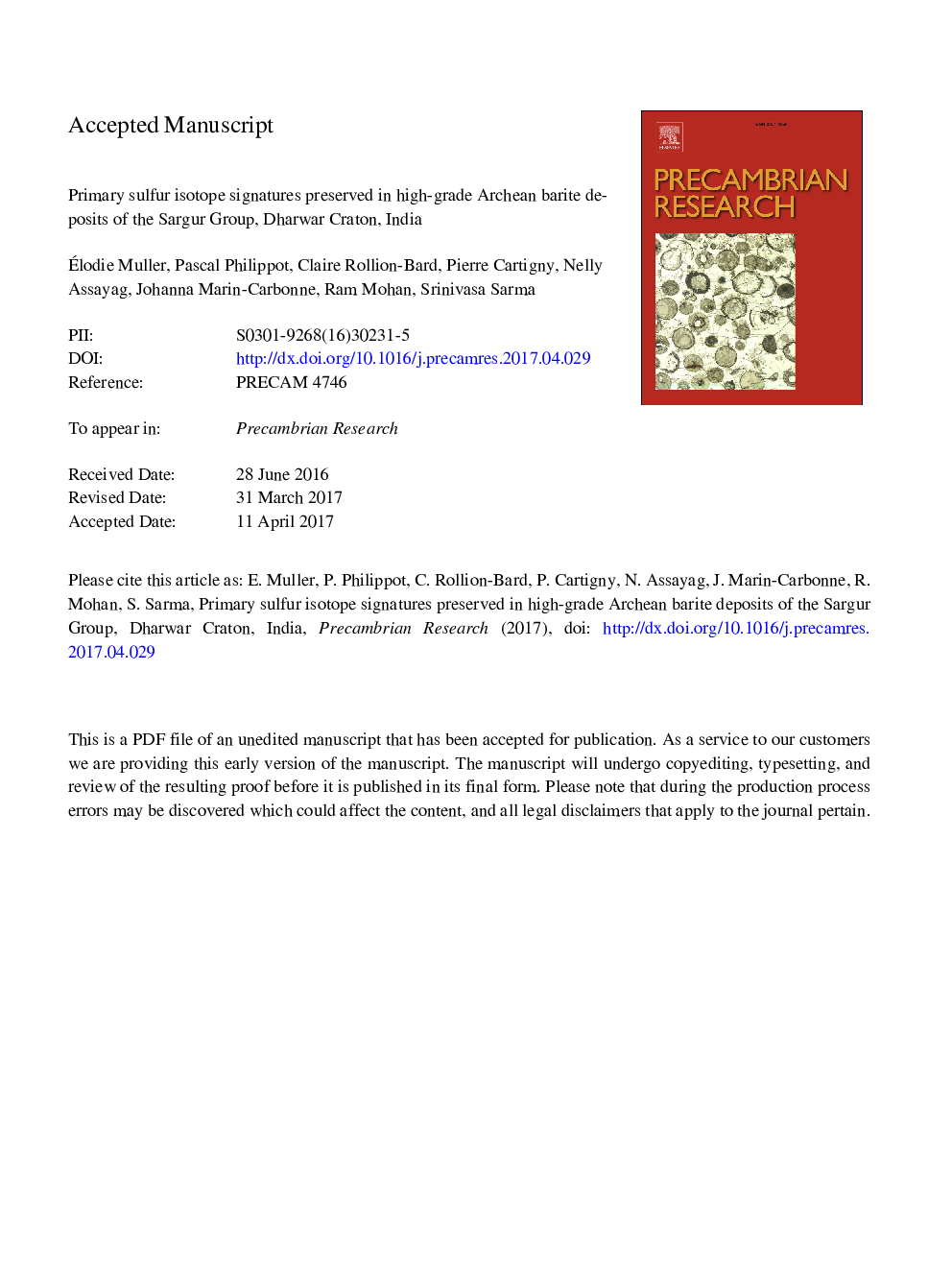| Article ID | Journal | Published Year | Pages | File Type |
|---|---|---|---|---|
| 5784824 | Precambrian Research | 2017 | 35 Pages |
Abstract
We report in situ and bulk S-isotope analyses of the 3.2 Ga old barite deposit of the Sargur Group, Dharwar Craton, India. Compared with the two other coeval barite deposits in Western Australia (Pilbara Craton, Warrawoona and Sulfur Springs Group) and South Africa (Kaapvaal Craton, Onverwacht and Fig Tree Group), the rocks of the Sargur Group have experienced pervasive ductile deformation and equilibrated under high-grade metamorphic conditions, which could have caused partial S-isotope re-equilibration. However, in situ techniques revealed high spatial heterogeneities in δ34S of up to â¼18â° in barite-bearing pyrites, as well as similar Î33S anomalies compared to the associated sulfate indicating bacterial sulfate reduction isotope effects and a minor impact of the pervasive ductile deformation and metamorphism on the primary/diagenetic signatures. Our data in associated silicate rocks define consistent trends in Î33S/δ34S and Î36S/Î33S reflecting metamorphic reworking of primary photolytic signatures with sulfide deriving from thermal reduction of the barite sulfate at >400 °C. Our results match the previous data obtained on other Early Archean barite deposits. This strongly suggests that similar sulfur sources were at play over the three continents during the production and preservation of atmospheric sulfate and elemental sulfur aerosols. This also confirms that the different Early Archean barite deposits known on Earth formed during periods of intense subaerial volcanism and record volcanic photolytic signatures different from those common in the Archean.
Keywords
Related Topics
Physical Sciences and Engineering
Earth and Planetary Sciences
Geochemistry and Petrology
Authors
Ãlodie Muller, Pascal Philippot, Claire Rollion-Bard, Pierre Cartigny, Nelly Assayag, Johanna Marin-Carbonne, M. Ram Mohan, D. Srinivasa Sarma,
